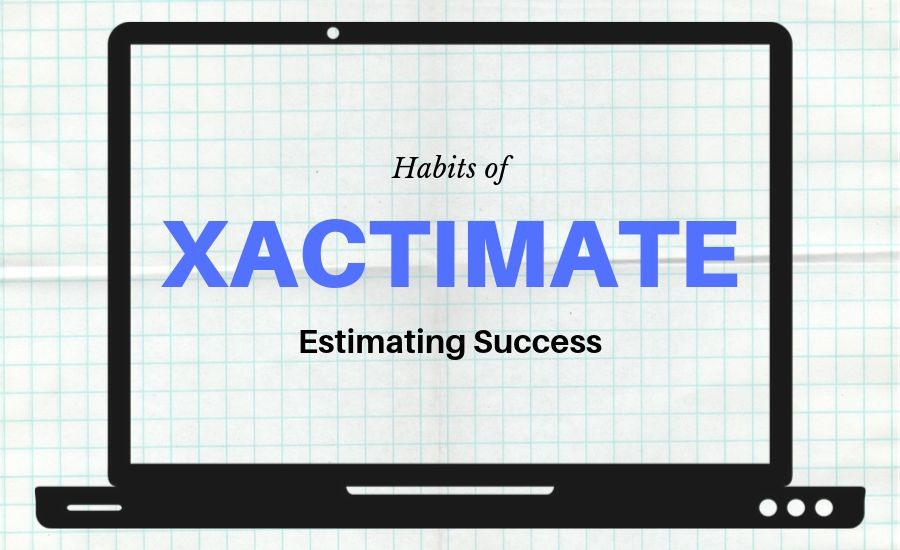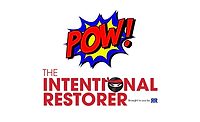Habits of Xactimate Estimating Success | WITH VIDEO!
PLUS, download a FREE eBook!

How often have you heard that the purpose of the estimate is to tell the story of the loss? If you haven’t heard that yet, please lock it in now. When writing an estimate in Xactimate, your opening statement, is the start of that story narrative. This claim opening should give anyone browsing your estimate a synopsis of the source of the loss, extent of the damages and your approach to restoring the property. This narrative also starts the structure of a good Xactimate estimate. We work from the source of the loss outward. In composing our line items we either work from the top down or the bottom up.
Poorly structured estimates show lack of care and expertise
How often have you reviewed an estimate from an adjuster or a competitor that has little structure and is hard to follow? Most Xactimate professionals can see the telltale signs of an estimator who is either inexperienced or has lazy estimating habits:
- Rooms that are sketched as separate entities that are not connected into a complete structure demonstrates that you do not have mastery of the platform.
- A lack of photos is a sure fire way to get your estimate rejected, even if you are not doing program work.
- Estimates with line items that are non-sequential, this is a chaotic way to approach an estimate and does not help a reviewer to follow the story of the loss.
For more tips, you can read our article on The Three R’s of Mastering Xactimate
Structural habits will help generate estimating consistency
Many Xactimate professionals are fans of macros. While I have several friends who utilize these tools, I have often found that they are more cumbersome than they are helpful. You will have to decide for yourself what works best for you and your team. With credit to my former employer BELFOR, who is one of the largest players in the property restoration landscape, they worked to promote estimating consistency which helped to elevate my habits. Structuring your estimate with headings helps you as the estimator to capture the details the same way every time and thereby reducing the missed items. Headings also serve as a sort of table of contents for each room so that reviewers and customers will see both the care you have put into your estimate as well as enable them to follow your approach more clearly.
How top-down or bottom-up informs our estimate structure:
- If you are working top down, you might start the headings in your estimate as ceilings, walls, fixtures, finishes, flooring and prep items. You can get as detailed as you want by having those core categories capitalized and in bold with sub categories only in bold.
- Mitigation headings would include prep items, equipment, removal and monitoring.
- Even if you use time and materials for your estimating, you can segment your billing recap by room or area into category heading for a cleaner estimate.
- The goal is to tell the story, ensure you don’t miss items, help your clients to be able to follow your approach to the loss and set your estimates apart from the status quo.
Setting your estimate apart from the status quo
While there are plenty of tricks of the trade and technological advances that can take your estimating to the next level, it all starts with mastering the basics. Brian Hoyer, who was a back-up for the six time Super Bowl champion quarterback Tom Brady, noted how dedicated Tom was to practicing the basics.
"Being around it makes you a better quarterback," Hoyer said. "You watch what he does and how focused he is with fundamentals -- front foot, shoulders, eyes, all those things. I remember going back to my first stint here (2009-2011) and I felt like I became such a better fundamental passer just by watching him and doing the same drills. He's obsessed with it."
Your process as an estimator starts with getting the claim details before you visit the loss site. Following the same process each time as you document the loss through photographs from the front of the loss and on through the structure. Again, you are telling the story and a picture is worth a thousand words so you can never take too many photos. You habits should include sketching your estimate the same way each time as well as taking detailed notes while onsite. Once you have the data, it’s time to compose your estimate structure and capture the line items that reflect a solid Xactimate estimate. Mastering the fundamentals will set you apart.
Your habits demonstrate your professionalism
As Brian Hoyer notes, Brady’s dedication to the fundamentals inspired him to be better. I am so thankful to be a part of an industry where professionals are challenging each other to be better every day. I am also thankful for some great mentors who have demonstrated how to do things the right way and to be proud of doing so. Good competition is good for all of us and elevates our industry. Whether you are starting your estimating journey, improving your Xactimate skills or managing other estimators, you will find additional help from our FREE E-Book The Ten Commandments of Xactimate Estimating Success. Continue your professional development by mastering the basics, learning from your peers and setting an example of excellence for those around you.
Looking for a reprint of this article?
From high-res PDFs to custom plaques, order your copy today!








